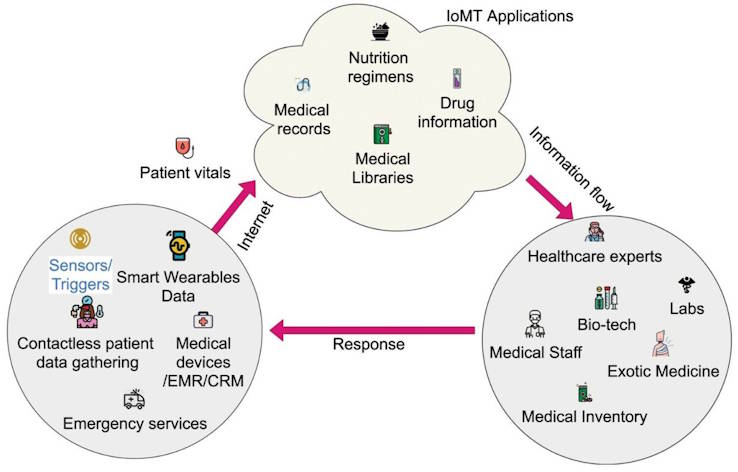
Internet Of Medical Things
By Karen Schumacher
As everyone is relentlessly distracted by the daily chaotic events, the movement towards a digital control grid continues to silently be put into place.
The Internet of Things (IoT) is essential for feeding the beast known as the artificial intelligence agent (AI Agent) which replaces human problem solving. However, IoT is really a conglomerate of gathering specific areas of information and then transmitting that to a data center which feeds the beast. In turn, that information can be broken down further. Yes, it is confusing.
Take the Internet of Bodies (IoB) which can be broken down into wearable, implanted, injected, and ingested medical devices. These devices and objects that have made their way on and into the body are used for surveilling and collecting health data, then transmitting that data to the beast. All collected data is stored in a cloud with other information and then analyzed by an AI Agent for “patient symptoms, medical histories, and laboratory test results to make preliminary diagnoses and recommendations.” The Agent just assumed the medical provider’s role.
IoB can be further broken down into the Internet of Medical Things (IoMT). Some examples include wearables like smart watches or heart monitors, glucometers, connected contact lenses, Implantable Cardioverter-Defibrillators, Bluetooth Digital Thermometers, or smart mattresses that monitor your health during sleep. It can even go deeper with how often hands are washed and whether or not one’s mood isn’t quite right, and so much more.
All of this is sold as a huge benefit to one’s health, and that is probably true. Who wouldn’t want to know their blood sugar has dropped or their heart is fluttering requiring immediate intervention? Another advantage is how all of the collected data can be used for research to make healthcare even better! Is permission even needed for that? There is also the ongoing focus on how much healthcare costs can be reduced! Hurrah, Win, Win, Win for everyone!
Just where in these graphics of IoMT is the patient? The human being? The human interaction when most needed? All IoT is about algorithmic graphics that outline how every object in connected to each other via the internet. However, even though it isn’t shown very often, IoT includes humans being connected to it as well.
On the back burner to this new frontier are security issues on the data that is collected and protection from cyberattacks, data getting mixed up or obliterated, or just keeping data private which even with HIPAA doesn’t happen. Maybe some twisted soul would just like to mess around with the data and alter the information, or even destroy it. What about those devices from different manufacturers being compatible for interoperability, or being compatible with an electronic health record? Heck, let’s worry about all of those things later, this frontier is just too important! While all of this may sound like a modern miracle there are huge concerns about its implementation without addressing the legitimate problems it raises before it advances.
IoMT is also just one step closer to the fusion of digital, biological and physical worlds. That is the danger, a fulfillment of the World Economic Forum (WEF) Fourth Industrial Revolution where technocratic control will be achieved over humanity and there is no guarantee this technology will always be used for the benefit of humanity.